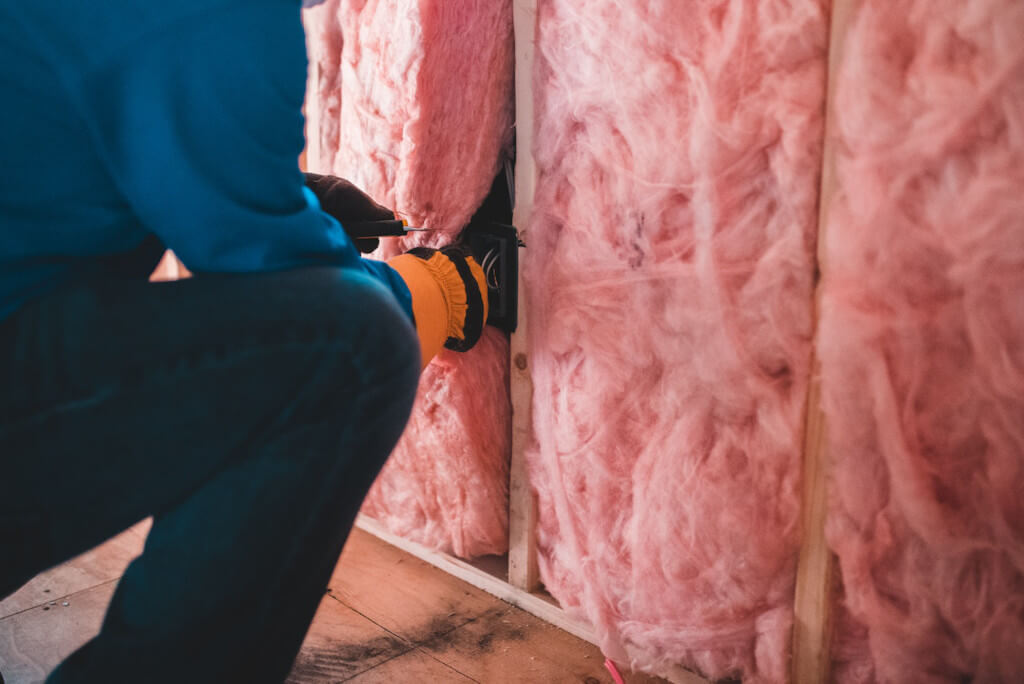Insulation can serve a wide variety of purposes, and its price can vary greatly depending on the type and application. One type of insulation may work best for walls, while another works better for ceilings or applications below floors. Some need to be set up by a professional, while others can be set up on your own.
Different Types of Insulation
These are the available various types of insulation:
- Reflective insulation is made up of paper on the inside and aluminum foil on one side. The aluminum detects heat a significant distance from your home.
- A honeycomb core can be found in some reflective insulation, and this helps to reduce heat gain.
- Insulation batts contain air pockets that act as a barrier between the inside of your home and the outside heat. Fiberglass or cellulose can be used to make it, depending on the application. Similarly, some types of batt insulation have a reflective surface area.
- Spray insulation, like blown-in insulation, contains air pockets, but its installation requires the assistance of trained professionals.
- Ceilings typically make use of loose-fill insulation in their construction. It, too, has air pockets and needs to be expertly set up to function properly.
- Insulation boards can be obtained without much trouble. They are utilized frequently beneath flooring, and some boards even have aluminum support underneath them.
DIY projects involving reflective and batt insulation are possible, but you’ll need to know what you’re doing before you start. Heat can enter the house through any of the openings that are not covered. It is recommended that you install batt insulation before installing wall panels if this is something that you are going to be doing. Spray insulation can be installed through holes in your walls or from the outside of your property if your home has cladding that can be removed in part. This is an option if you do not already have insulation.
Spray insulation calls for specialized equipment and must be installed by a trained professional. The people who will be installing it are aware of how to do so in a way that will fill the areas but will not overcrowd them. Under flooring is another possible location for spray insulation to be used. The installation of loose-fill insulation also requires the use of specialized equipment and must be carried out by trained professionals.
It is possible to construct it out of wool, cellulose, or fiberglass. When installing fiberglass insulation, it is important to protect one’s skin by wearing long-sleeved shirts, gloves, and a face mask. Fiberglass insulation of any kind can cause skin irritation. The same principle applies to the process of interrupting the flow of loose-fill fiberglass insulation. Because of its potential to irritate the skin, it should only be used in situations in which there are no plans to utilize the ceiling cavity. Alternatively, you can construct something to cover it up.
What is the Insulation’s Value in Terms of Rands?
Insulation batts are frequently used in ceilings, walls, and even underneath the flooring, in addition to their more common use in walls. The price varies depending on how much “R” it has to offer. The rand value is essential because it provides crucial information regarding the dependability of the insulation. A house with a lower value will not be insulated any better than one with a higher value. The following are some examples of common costs:
- It might cost R350 for R 2.0 batts to cover an area of 8.17 square meters of wall or ceiling.
- It might cost you R580 to cover 7.0 m2 of wall or roof space with R 2.5 batts.
- It might cost R720 for five batts to cover 5.5 square meters of wall or roof space.
Although R 5.0 batts will cover a smaller area than R 2.0 batts, the additional cost may be justified in some circumstances. You also have the option of purchasing larger sizes, which will result in a reduced price per square meter. You won’t get the necessary insulation from R 2.0 batts if you live in a particularly warm or cold climate, and as a result, your costs for cooling and heating will be higher.
When shopping for insulation of any kind, one must take into account the “R” value that the material possesses, as this value varies depending on the type of insulation. The “R” value of the insulating material you buy may also be determined in part by the environmental zone in which you live. For example, if you live in an area that typically experiences temperate weather, an “R” value of 3.0 or 4.0 might be sufficient. A minimum “R” value of 5.0 is required, and this requirement must be met in regions that experience both severe cold and extreme heat.
How Much Does It Cost to Insulate a House?
For do-it-yourself insulation, the only expense you will incur is the cost of the insulation itself; there will be no additional costs associated with installation. Typical costs associated with a do-it-yourself setup include the following:
- Ranging from R12000 for R2.0 batts to R13000 for R5.0 batts for 100m2 of protection, with 115 for reflective insulation protecting 60m2 of area.
- Insulation boards range in price from R125 for a 1200×600 panel that is 30 millimeters thick to R370 for a 2400×1200 panel that is 10 millimeters thick.
Installing this type of insulation on your own is possible. It may cost you between R500 and R800 per hour to have them expertly set up, depending on your preference. The reduced price is for a simple activity, while the higher rate is for more complex activities. The following are some examples of activities that might call for a higher rate:
- The concentration of the item being sold.
- Obtain information about the issues.
- Blockages
- Spacing in between wooden beams
Installers’ productivity will suffer as a direct result of all of these factors, which may also have an impact on the cost. If there is no other option but a crawl space, then the job will be more challenging and costly. The price will change depending on whether or not concerns and roadblocks are resolved. If an installer needs to determine the flooring joists to set up batts precisely, this is an additional cost factor that should be considered.
You will not be charged on a per-hour basis for our services. An insulation installer will begin by inspecting the area in question and will then provide you with a price estimate based on their findings.
There will be some price variation, but you should budget approximately R30,000 for approximately 135 meters. If they must dispose of rid of old loose fill, it could cost another R12,000, and if asbestos fill is still in the roof, it will cost a great deal more to get rid of because it needs to be removed thoroughly and special clothing and breathing equipment are required.
If they must be rid of asbestos fill, it will cost a great deal more to get rid of. These are rough estimates, and the actual costs may be different depending on where you live. To find out how much installing loose-fill insulation will cost in your area, get estimates from various installers of the material.
Insulation is a Cost-effective Strategy That Can Be Used to Reduce Heating and Cooling Bills
Your choice of insulation material will also make a difference in this regard. Insulation of any kind, according to several different price quotes, will pay for itself steadily in the form of reduced heating and cooling expenditures, which means that it is a house improvement that is worth purchasing and will make any house significantly more comfortable.

